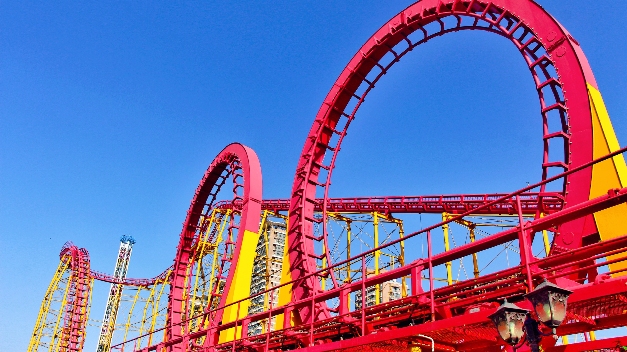- Albanian
- Arabic
- Belarusian
- Bengali
- Czech
- English
- French
- German
- Hebrew
- Hungarian
- Indonesian
- irish
- Italian
- Japanese
- kazakh
- Persian
- Russian
- Thai
- Uzbek
- Vietnamese
roller coaster classifications
Understanding Roller Coaster Classifications
Roller coasters are one of the most beloved attractions in amusement parks around the world, captivating thrill-seekers of all ages. The excitement of plunging down steep drops, twisting through loops, and speeding around sharp curves makes for an unforgettable experience. However, not all roller coasters are created equal, and they can be classified into several categories based on specific criteria. Understanding these classifications can enhance one’s appreciation of roller coasters and their design.
1. Type of Track
One of the primary ways to classify roller coasters is by the type of track they use. Here are the main categories
- Wooden Coasters Made predominantly from wood, these coasters have a classic charm and are known for their rough, yet thrilling ride. The wooden structure allows for a unique experience, often featuring natural terrain and wooden supports that can create a nostalgic atmosphere.
- Steel Coasters These modern coasters feature a steel track and are known for their smooth rides and intricate designs. Steel coasters can accommodate more complex structures than wooden ones, allowing for loops, corkscrews, and faster speeds.
- Hybrid Coasters These combine both wooden and steel elements, using wood for the supports and a steel track. Hybrid coasters aim to blend the best features of both types, offering the smoothness of steel with the rustic feel of wood.
2. Ride Layout
Another criterion for classification is the layout of the coaster, which can significantly affect the ride experience. Key layouts include
- Looping Coasters These feature one or more inversions, like loops or corkscrews. Riders experience weightlessness and intense G-forces as they navigate these thrilling twists.
- Inverted Coasters In these designs, the tracks are overhead, and riders dangle beneath. This layout allows for unique flipping and twisting motions, enhancing the thrill.
- Sit Down Coasters The most common type, where riders sit on a bench-like seat with the track beneath them. This design generally provides a straightforward roller coaster experience.
- Flying Coasters These give the sensation of flight, with seats positioned in such a way that riders lie on their stomachs. This design mimics the feeling of soaring through the air as they zoom through the course.
roller coaster classifications

3. Speed and Height
Roller coasters can also be classified based on their height and speed, which are significant factors contributing to their thrill level
.- Hyper Coasters These coasters typically exceed 200 feet in height and are known for their high speeds and steep drops. Their design focuses on airtime hills, giving riders exhilarating moments of weightlessness.
- Megalite Coasters Slightly shorter than hyper coasters, megalite coasters offer height and speed but typically focus more on smooth and quick transitions than on extreme drops.
- Launch Coasters Instead of the traditional lift hill, these coasters use a launch mechanism to propel riders forward rapidly, creating a thrilling experience akin to flying.
4. Special Features
Some roller coasters include special elements that set them apart from others. These may include
- Spinning Coasters Featuring cars that rotate as they move along the track, these coasters offer a disorienting and exhilarating experience as riders spin to different angles.
- B&M Dive Coasters Known for their unique drop technique, these coasters create a moment of suspense as they pause at the peak before plunging down vertically, followed by inversions.
- 2D and 3D Coasters Utilizing advanced simulation technology, these attractions can provide a more immersive experience, often combining physical movement with digital visuals.
Conclusion
Roller coasters are a fascinating blend of engineering, design, and thrill-seeking. By understanding the various classifications—whether by type of track, ride layout, speed, or special features—riders can better appreciate the intricacies that go into creating these exhilarating experiences. As the technology continues to evolve, we can anticipate new and exciting innovations that will push the boundaries of what roller coasters can offer. Whether you're a coaster enthusiast or a casual rider, knowing these classifications may enhance your experience as you embark on your next adrenaline-pumping adventure.
-
Flume Ride-Hebei Zhipao Amusement Equipment Manufacturing Co., Ltd.|Thrilling Water Attraction&NIST Safety StandardsAug.01,2025
-
Double Ferris Wheel Sale | Premium Custom RidesJul.31,2025
-
Flume Ride-Hebei Zhipao|Water-Based Attraction, Safety Standards, High-Speed DescentJul.31,2025
-
Flume Ride: Thrilling Water-Based Adventure & Advanced Engineering - Hebei ZhipaoJul.31,2025
-
Flume Ride-Hebei Zhipao Amusement Equipment Manufacturing Co., Ltd.|Thrilling Water Attraction&Customizable DesignJul.30,2025
-
Flume Ride - Hebei Zhipao Amusement Equipment | Water Coaster, Thrilling DescentJul.30,2025
